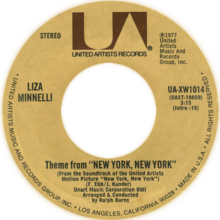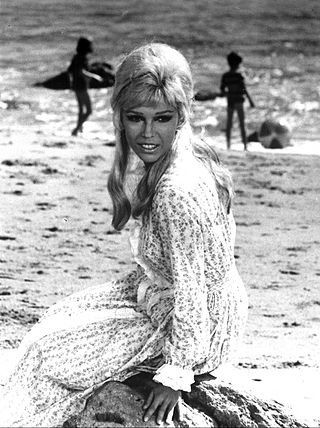
Nancy Sandra Sinatra is an American singer. She is the elder daughter of Frank Sinatra and Nancy Sinatra and is known for her 1965 signature hit "These Boots Are Made for Walkin'".

Liza May Minnelli is an American actress, singer, dancer, and choreographer. Known for her commanding stage presence and powerful alto singing voice, Minnelli is one of the very few performers awarded a non-competitive Emmy, Grammy, Oscar, and Tony (EGOT). Minnelli is a Knight of the French Legion of Honour.
Kander and Ebb were a highly successful American songwriting team consisting of composer John Kander and lyricist Fred Ebb. Known primarily for their stage musicals, which include Cabaret and Chicago, Kander and Ebb also scored several movies, including Martin Scorsese's New York, New York. Their most famous song is the theme song of that movie. Recorded by many artists, "New York, New York" became a signature song for Frank Sinatra. The team also became associated with two actresses, Liza Minnelli and Chita Rivera, for whom they wrote a considerable amount of material for the stage, concerts and television.
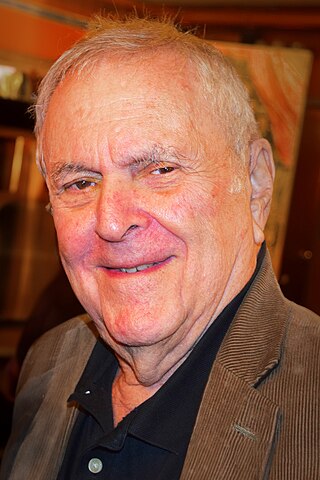
John Harold Kander is an American composer, known largely for his work in the musical theater. As part of the songwriting team Kander and Ebb, Kander wrote the scores for 15 musicals, including Cabaret (1966) and Chicago (1975), both of which were later adapted into acclaimed films. He and Ebb also wrote the standard "New York, New York".

Fred Ebb was an American musical theatre lyricist who had many successful collaborations with composer John Kander. The Kander and Ebb team frequently wrote for such performers as Liza Minnelli and Chita Rivera.

"My Way" is a song popularized in 1969 by Frank Sinatra set to the music of the French song "Comme d'habitude" composed by Jacques Revaux with lyrics by Gilles Thibaut and Claude François and first performed in 1967 by Claude François.

New York, New York is a 1977 American romantic musical drama film directed by Martin Scorsese from a screenplay by Earl Mac Rauch and Mardik Martin, based on a story by Rauch. It is a musical tribute, featuring songs by John Kander and Fred Ebb as well as jazz standards, to Scorsese's home town of New York City, and stars Liza Minnelli and Robert De Niro as a pair of musicians and lovers. The story is "about a jazz saxophonist and a pop singer (Minnelli) who fall madly in love and marry;" however, the "saxophonist's outrageously volatile personality places a continual strain on their relationship, and after they have a baby, their marriage crumbles," even as their careers develop on separate paths. The film marked the final screen appearance of actor Jack Haley.
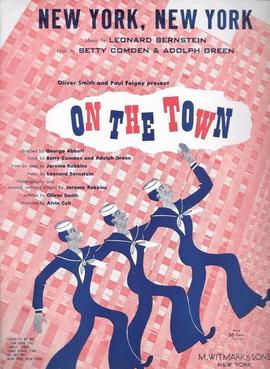
"New York, New York" is a song from the 1944 musical On the Town and the 1949 MGM musical film of the same name. The music was written by Leonard Bernstein and the lyrics by Betty Comden and Adolph Green. A well known line of this song is:
New York, New York, a helluva town. The Bronx is up but The Battery's down.
"It Was a Very Good Year" is a song composed by Ervin Drake in 1961 and originally recorded by Bob Shane with the Kingston Trio. It was made famous by Frank Sinatra's version in D minor, which won the Grammy Award for Best Male Vocal Performance in 1966 and became Sinatra's first number one Adult Contemporary single, also peaking at No. 28 on the Hot 100.
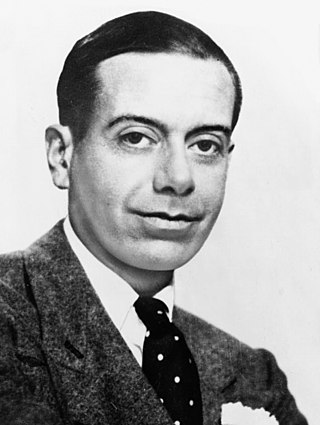
"Let's Do It, Let's Fall in Love" (also known as "Let's Do It (Let's Fall in Love)" or simply "Let's Do It") is a popular song written in 1928 by Cole Porter. It was introduced in Porter's first Broadway success, the musical Paris (1928) by French chanteuse Irène Bordoni, for whom Porter had written the musical as a starring vehicle.
"New York State of Mind" is a song written by Billy Joel that initially appeared on the album Turnstiles in 1976. Although it was never released as a single, it has become a fan favorite and a song that Joel plays regularly in concert. Joel famously played the song at The Concert for New York City, the October 2001 benefit concert for the New York City Fire and Police Departments and the loved ones of families of first responders lost during the terrorist attack on New York City on 9/11. He reprised that theme, playing it during his set at 12-12-12: The Concert for Sandy Relief at Madison Square Garden in New York City on December 12, 2012, where he changed lyrics to include the likes of "Breezy Point".
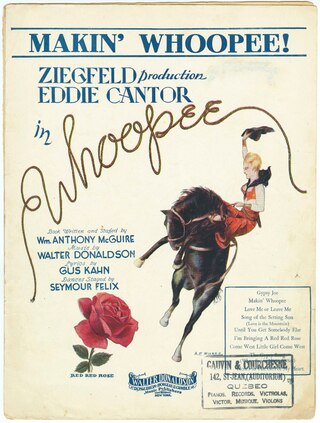
"Makin' Whoopee" is a jazz/blues song, first popularized by Eddie Cantor in the 1928 musical Whoopee!. Gus Kahn wrote the lyrics and Walter Donaldson composed the music for the song as well as for the entire musical.
"The Lady Is a Tramp" is a show tune from the 1937 Rodgers and Hart musical Babes in Arms, in which it was introduced by former child star Mitzi Green. This song is a spoof of New York high society and its strict etiquette and phony social pretensions. It has become a popular music standard.
"I've Got The World on a String" is a 1932 popular jazz song composed by Harold Arlen, with lyrics written by Ted Koehler. It was written for the twenty-first edition of the Cotton Club series which opened on October 23, 1932, the first of the Cotton Club Parades.
"Luck Be a Lady" is a song written and composed by Frank Loesser in 1950 and first performed by Robert Alda. The song was featured in the musical Guys and Dolls. The lyrics relate the point of view of a gambler, Sky Masterson, who hopes that he will win a bet, the outcome of which will decide whether or not he is able to save his relationship with the girl of his dreams.

Liza's Back is the ninth live album by American singer and actress Liza Minnelli, released by J Records in 2002.

Peter Allen was an Australian singer-songwriter, musician, and entertainer, known for his flamboyant stage persona, energetic performances, and lavish costumes. Allen's songs were made popular by many recording artists, including Elkie Brooks, Melissa Manchester and Olivia Newton-John, including Newton-John's first chart-topping hit "I Honestly Love You", and the chart-topping and Academy Award-winning "Arthur's Theme " by Christopher Cross. In addition to recording many albums, Allen enjoyed a cabaret and concert career, including appearances at the Radio City Music Hall riding a camel. His patriotic song "I Still Call Australia Home", has been used extensively in advertising campaigns, and was added to the National Film and Sound Archive's Sounds of Australia registry in 2013.

Minnelli on Minnelli: Live at the Palace was a concert presented by Liza Minnelli at the Palace Theatre on Broadway from December 8, 1999 through January 2, 2000. The show consisted of songs featured in films directed by her father, Vincente Minnelli (1903–1986).

Duets: 20th Anniversary Deluxe Edition is a 2013 box set album by American singer Frank Sinatra.
Billy Stritch is an American composer, arranger, vocalist, and jazz pianist. For many years, he was best known as a confidant, music director, and piano player for Liza Minnelli.
